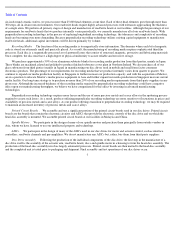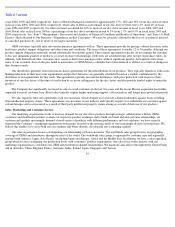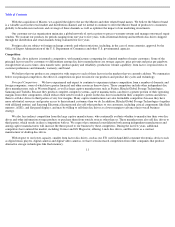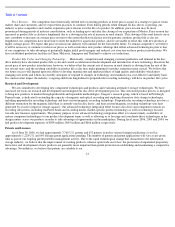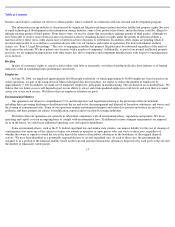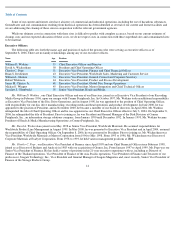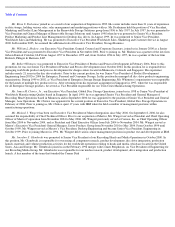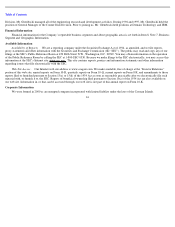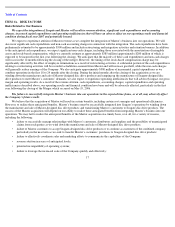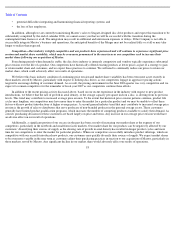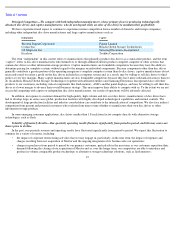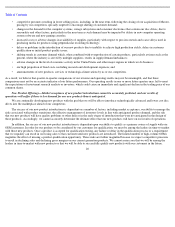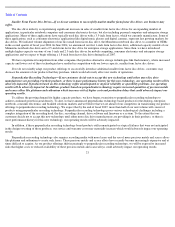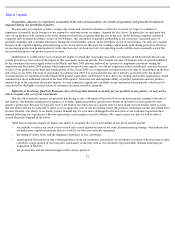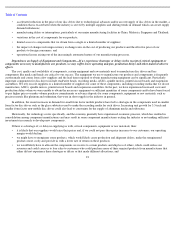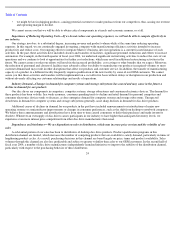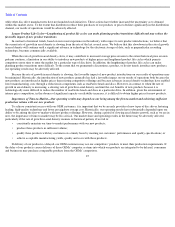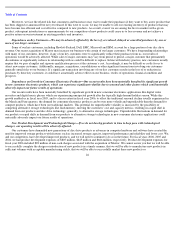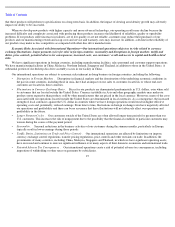Seagate 2005 Annual Report Download - page 19
Download and view the complete annual report
Please find page 19 of the 2005 Seagate annual report below. You can navigate through the pages in the report by either clicking on the pages listed below, or by using the keyword search tool below to find specific information within the annual report.
Table of Contents
ITEM 1A.
RISK FACTORS
Risks Related to Our Business
We expect the integration of Seagate and Maxtor will result in revenue attrition, significant cash expenditures and accounting
charges, increased capital expenditures and operating inefficiencies that will have an adverse effect on our operating results and financial
condition during fiscal year 2007 and potentially beyond.
We expect to experience attrition of Maxtor revenue as we complete the integration of Maxtor’s business into our operations. We will
also incur significant cash expenditures and non-cash accounting charges in connection with the integration. The cash expenditures have been
preliminarily estimated to be approximately $500 million and include restructuring and integration activities and retention bonuses. In addition
to the anticipated cash expenditures, we expect significant non-cash charges, including those associated with the amortization of intangible
assets and stock-based compensation, which we currently estimate at approximately $385 million (approximately $200 million of which is
expected to be incurred in the first year following the closing). We anticipate that the majority of these cash expenditures and non-cash charges
will occur in the 12 months following the closing of the merger. However, the timing of the stock-based compensation charge may be
significantly affected by the effect of employee terminations as a result of restructuring activities. A substantial portion of the cash expenditures
relating to restructuring activities will be recorded as liabilities assumed from Maxtor and will increase goodwill, while the non-cash charges
will generally reduce earnings of the Company. We also anticipate approximately $580 million of incremental capital expenditures as we
combine operations in the first 18 to 24 months after the closing. During the initial months after the closing of the acquisition as we are
winding down the manufacture and sale of Maxtor-designed disc drive products and ramping up the manufacture of Seagate-designed disc
drive products to meet Maxtor’s customers’
demands, we also expect to experience operating inefficiencies that will adversely impact our gross
margin and operating results. As a result of the revenue attrition, cash expenditures, accounting charges, capital expenditures and operating
inefficiencies described above, our operating results and financial condition have been and will be adversely affected, particularly in the first
year following the closing of the Merger which occurred on May 19, 2006.
The failure to successfully integrate Maxtor’s business into our operations in the expected time frame, or at all, may adversely affect
the Company’s future results.
We believe that the acquisition of Maxtor will result in certain benefits, including certain cost synergies and operational efficiencies.
However, to realize these anticipated benefits, Maxtor’s business must be successfully integrated into Seagate’s operations by winding down
the manufacture and sale of Maxtor-designed disc drive products and transitioning Maxtor’s customers to Seagate disc drive products. The
success of the Maxtor acquisition will depend on our ability to realize these anticipated benefits from integrating Maxtor’s business into our
operations. We may fail to realize the anticipated benefits of the Maxtor acquisition on a timely basis, or at all, for a variety of reasons,
including the following:
•
failure to successfully manage relationships with Maxtor’s customers, distributors and suppliers and the possibility of unanticipated
claims from such parties as we wind down the manufacture and sale of Maxtor
-
designed disc drive products;
•
failure of Maxtor customers to accept Seagate-designed disc drive products or to continue as customers of the combined company,
particularly in the near term as we seek to transfer Maxtor
’
s customers
’
purchases to Seagate
-
designed disc drive products;
•
failure to effectively coordinate sales and marketing efforts to communicate the capabilities of the Company;
•
revenue attrition in excess of anticipated levels;
•
potential incompatibility of operating systems;
17
•
failure to leverage the increased scale of the Company quickly and effectively;


